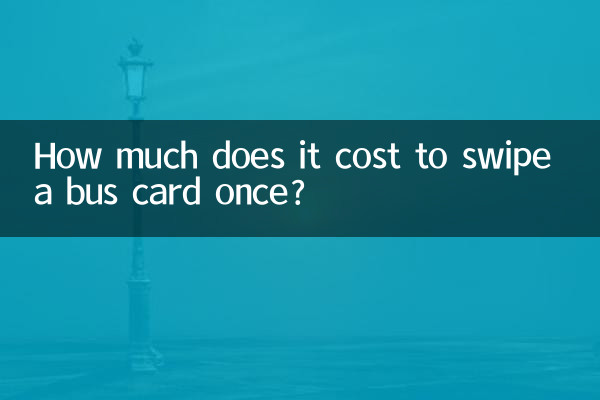How much does it cost to swipe a bus card once? Comparison of bus card fees in major cities across the country
Recently, discussions about the cost of public transportation have become a hot topic again. With the fluctuation of oil prices and adjustments to urban transportation policies, many citizens have begun to pay attention to the cost of swiping bus cards. This article will sort out the bus card charging standards in major cities across the country and provide analysis of relevant hot topics in the past 10 days.
1. Comparison of bus card charging standards in major cities across the country

| city | Ordinary bus | Air-conditioned bus | Subway basic fare | Preferential policies |
|---|---|---|---|---|
| Beijing | 1 yuan | 2 yuan | Starting from 3 yuan | Accumulated discount |
| Shanghai | 2 yuan | 2 yuan | Starting from 3 yuan | Transfer discount |
| Guangzhou | 2 yuan | 2 yuan | Starting from 2 yuan | 40% off after 15 times |
| Shenzhen | 2 yuan | 2.5 yuan | Starting from 2 yuan | Transfer discount within 90 minutes |
| Chengdu | 1 yuan | 2 yuan | Starting from 2 yuan | Free transfer within 2 hours |
| Wuhan | 1.6 yuan | 2 yuan | Starting from 2 yuan | Transfer discount within 90 minutes |
| Hangzhou | 1 yuan | 2 yuan | Starting from 2 yuan | Transfer discount within 1 hour |
| Nanjing | 1 yuan | 2 yuan | Starting from 2 yuan | Transfer discount within 90 minutes |
2. Analysis of recent hot topics
1.Rumors about Beijing bus fare adjustment: Recently there was news that Beijing may adjust bus fares, triggering widespread discussion. The Beijing Municipal Transportation Commission responded that there are currently no adjustment plans.
2.Popularization of electronic bus cards: The usage rate of electronic bus cards such as Alipay and WeChat continues to increase, and some regions have launched exclusive discounts. For example, Hangzhou electronic bus cards can enjoy a 20% discount.
3.Student card preferential policy: After the start of the new semester in many places, the number of student bus card applications surged. Some cities such as Guangzhou and Shenzhen offer a 50% discount for student cards.
4.Controversy over free ride policy for seniors: The discussion on whether free ride discounts for senior citizens should be canceled during peak hours has become a hot topic again.
3. Tips for using bus cards
1.Learn about local preferential policies: Many cities have cumulative discounts or transfer discounts, and reasonable planning can save transportation costs.
2.Pay attention to the balance on the card: Some city bus cards cannot be used if the balance is insufficient. It is recommended to recharge regularly.
3.Keep your bus card: There have been cases of bus card theft in many places recently. It is recommended to set a password or bind your mobile phone.
4.Follow official information: The fare policy may be adjusted. It is recommended to pay attention to the official announcement of the local transportation department.
4. Forecast of future trends
1.fare differentiation: Differential fares may be implemented according to time periods and routes.
2.Diversified payment methods: In addition to physical cards, new technologies such as mobile payment and facial recognition will become more popular.
3.Refinement of preferential policies: Preferential policies for different groups of people may be further refined.
4.Cross-city interconnection: More city bus cards will be used across regions.
From the above analysis, it can be seen that there are certain differences in bus card charging standards in various cities across the country, but they generally remain in the range of 1-3 yuan. With technological advancement and policy adjustments, public transportation payment methods and services will continue to be optimized to provide citizens with a more convenient and economical travel experience.

check the details

check the details